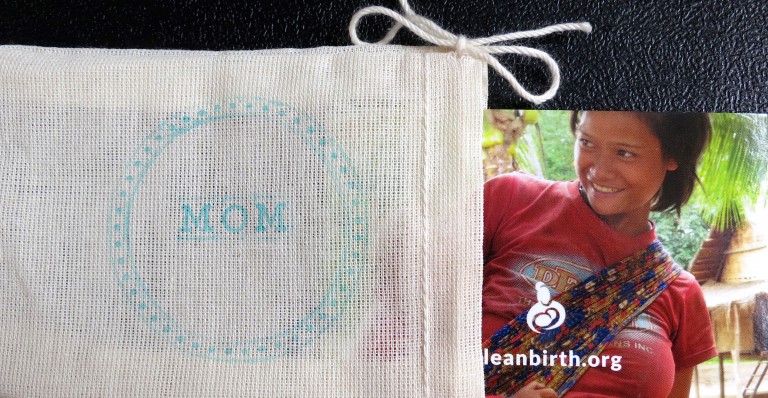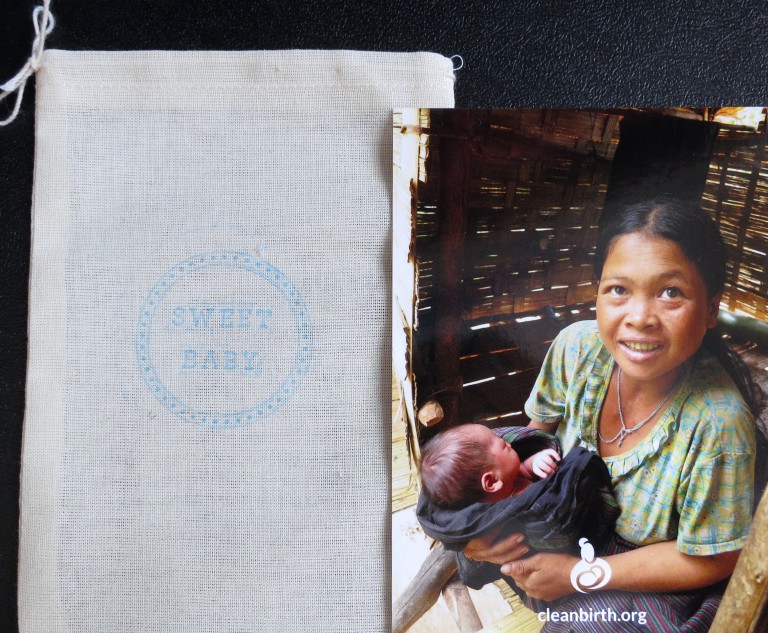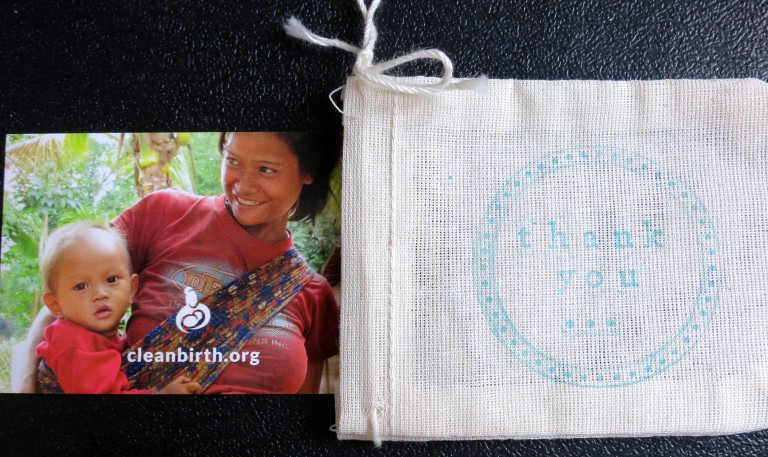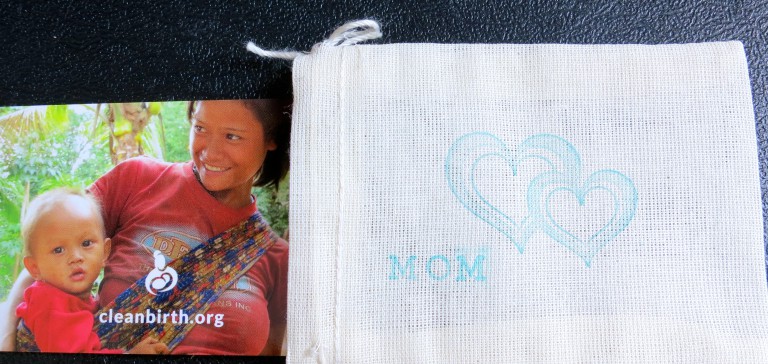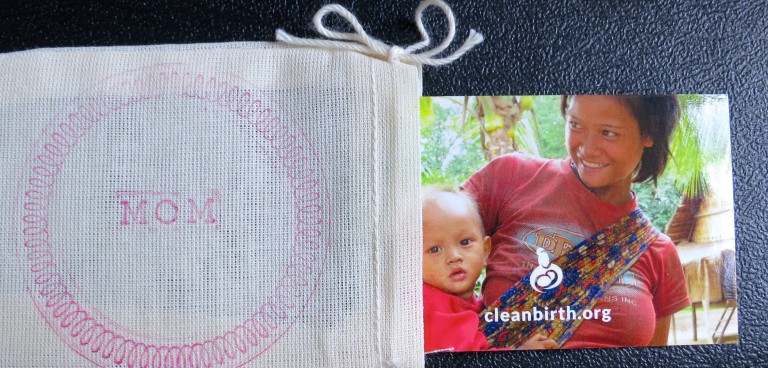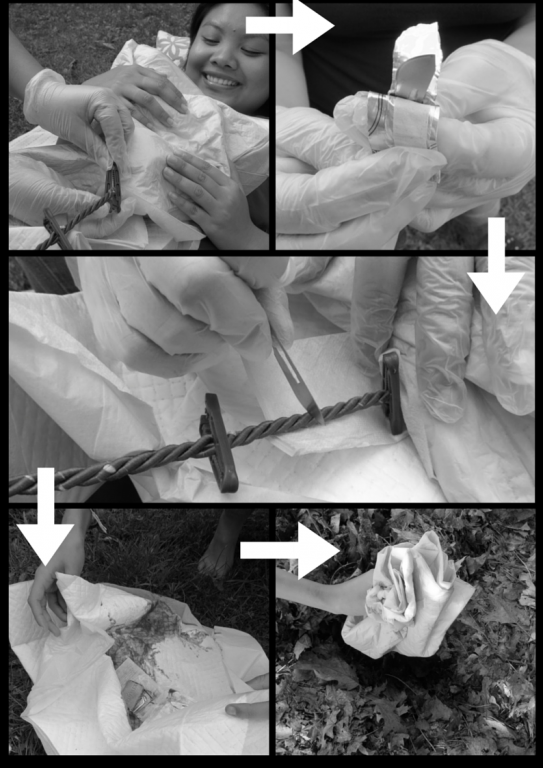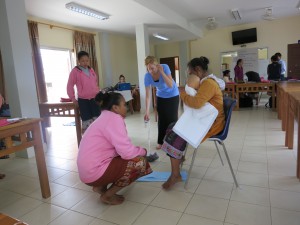I am so excited about our new Mother’s Day card designs. We have hand-stamped bags that make the perfect gift — with a card inside that can save the lives of moms & babies in Laos. Make mom’s day and make a difference. Check out our designs and order here: www.cleanbirth.org/mothersday
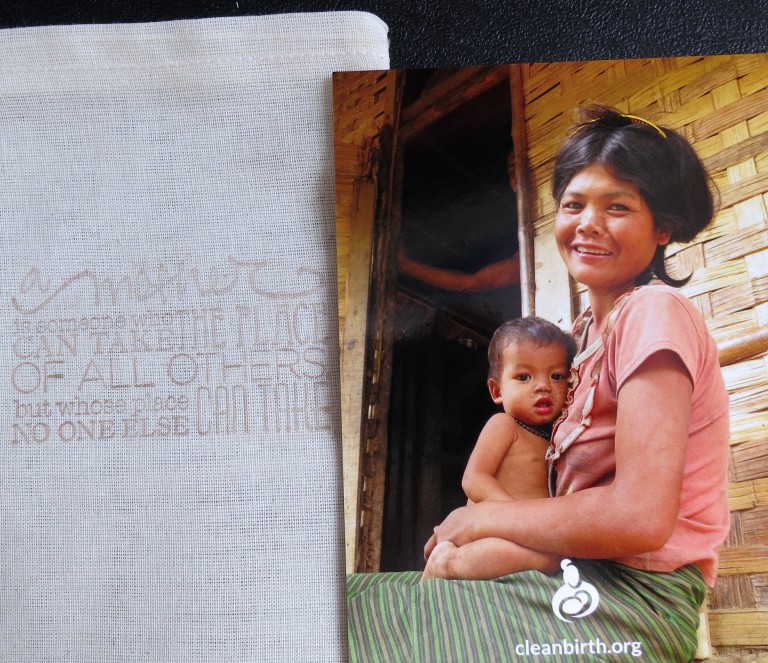
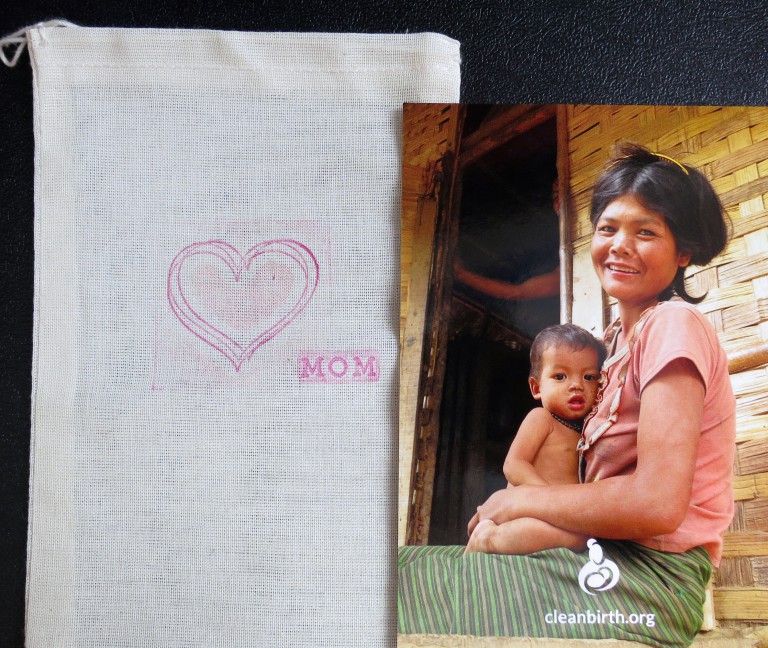


Mother’s Day & Baby Cards
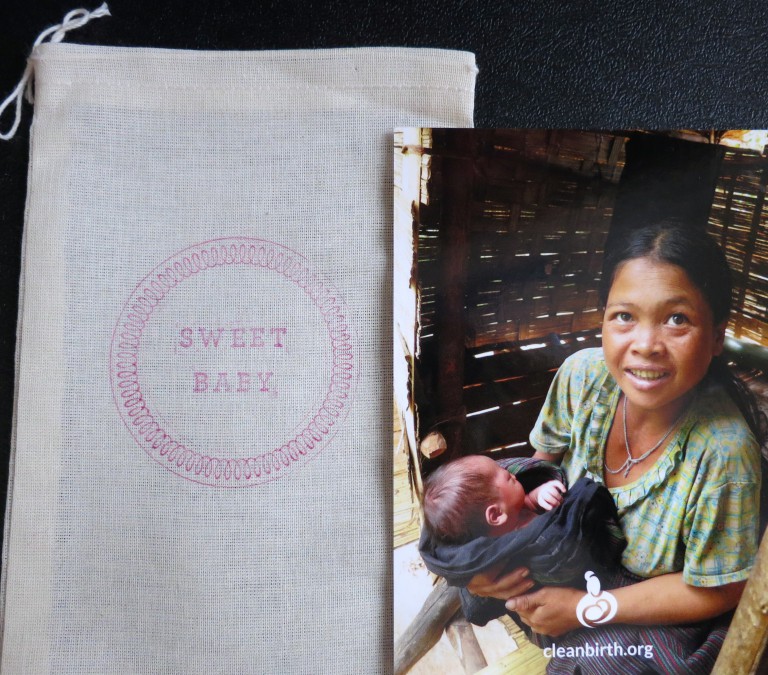
Our cards have been featured at many Baby Showers — adding a unique element to a special day by making a contribution to another mother’s birth.
Mother’s Day is a time to show our gratitude to mom. Why not show her that we get all that she has done by making a donation in her name. She gets a sweet card in a handstamped bag, and a mother in Laos gets a safer birth.
Make Mother’s Day 2015 a special one! Buy a card here: http://cleanbirth.org/mothersday/
October Monitoring & Evaluation Training

The training was attended by: Dr Nong, Ms Noy, Ms Nouan, Mr Chiew and Mr Atoy.
The group, led by Kelley:
- Reviewed the 2014-2015 Cleanbirth Monitoring plan
- Identified of the health centers OVACD has the capacity to work with in-depth (and conduct qualitative monitoring)
- Identified villages where OVACD has the capacity to work closely with mothers & TBAs directly
- Full understanding of the scope, details, and manpower required to implement the 2014-2015 Monitoring Plan
- Translated of 4 Nurses Monitoring Interviews (Lao-English) that had been conducted by field staff
- Revision of the Nurses and Mothers Monitoring Interviews form and a new Excel file to document and submit Nurse and Mother Monitoring Interviews
- Discussed new birth kit components (extra clamp, extra sheet, gloves) and understand that they will add supplemental packs to update birth kits already in Salavan to the new standard. Feedback was given about the picture sheet and revision will be made.
- Village Volunteer/TBA discussion: role of government, feasibility of program.
Kelley reports that OVACD says that kits are being used by clinics and mothers and that the OVACD team is enthusiastic about the work. The implementation of the log frame created by CleanBirth.org and OVACD and accompanying monitoring documents has clarified CleanBirth.org’s expectations for OVACD and streamlined data collection processes.
Birth Kits Instruction Sheet New and Improved
Thanks to the help of our high school interns Jenny and Khadija we photographed the kits in action. Our nurses in Laos had asked for more realistic pictures and we were able to deliver. Every kit going forward will have these pictures in it to make it clear to moms how to give birth safely and hygienically.
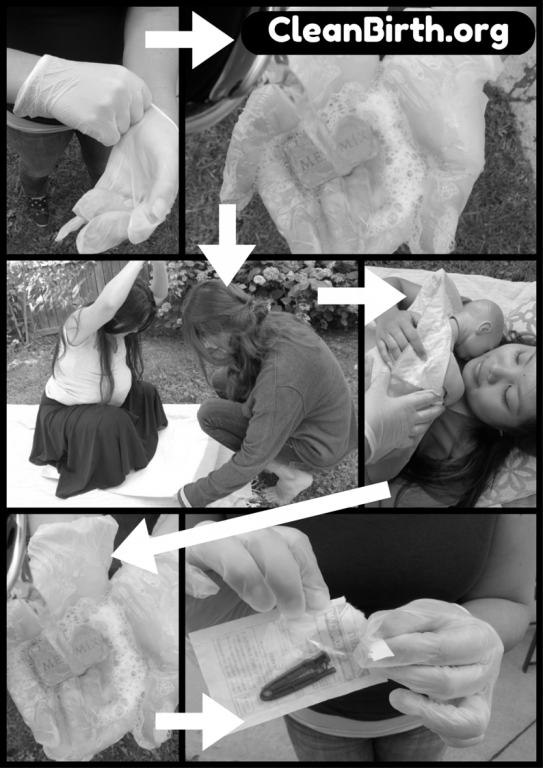
July Training Big Success!
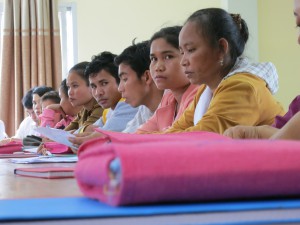
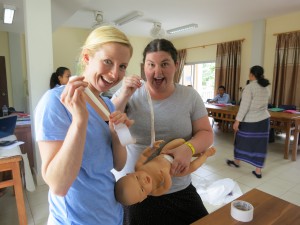
I cannot say enough about the amazing experience of training 53 nurses and health staff last week on the use of birth kits and WHO’s Essentials of Newborn Care. The Yale Nursing team did an amazing job of teaching the latter, which adds so much to the hygienic birth promoted by the birth kits. It was a perfect match!
We used role play extensively in the training: modeling and then giving extensive time for hands on practice.
We learned so much from the 18 returning nurses and health staff about how the kits are working in the field.
Per their suggestions we plan to make the following changes:
- Add gloves to the kits. These will NOT be for clean hands – we will still provide soap and clean picture instructions for cleaning hands throughout the birth process. Instead the gloves will be used to help overcome the specific taboo against touching the blood of the mother/baby. The gloves will thus be a tool for encouraging mothers to have a partner at birth.
- Add another absorbant sheet for wrapping newborn to the kits. This was much asked for and dovetails nicely into the Yale Midwives teaching about WHO’s Essentials of Newborn Care.
- Keep the cord clamps (not cotton ties) in the kits – add a second clamp. The plastic clamps are working once people get enough education about how to use them. The second clamp is needed because mothers usually tie off two place (mother and baby).
- Extend education beyond the mom. Have partner present during the education and at the after birth interview. This way, the laboring mother, is not the only one responsible for making sure birth is hygenic.
- Continue to train Village Volunteers but have nurses hand out the kits and do the interviews. When nurses visit the villages every 1-3 months they will distribute kits and interview mothers who have used the kits. This is better than the Volunteers, who are often not literate, tracking the kit usage.
In addition to practicing the use of birth kits, we spent time reviewing the data collection procedures. Due to erratic reporting, we decided that our partner organization will contact each nurse on the 1st day of the month and 5th day of the month via calls and texts. If no news by Day 7, the small stipend of $4 per month will be withheld for that month.
At the end of the training, we asked the nurses to tell the most important things they learned from the training. Here’s what they said:
- The steps of how to use the birth kit
- The importance of a birth partner so that mother is not alone
- The importance of clean hands for the birth attendant
- How to stimulate the baby
- How to use the bag and mask to resuscitate the baby
- How to put the baby skin to skin
- Why to delay cord clamping
- How to accurately record data
Success! It was a great training, thanks to the wonderful organization of our Lao partner’s staff, to Cele, Lizzie, and Hannah, from the Yale School of Nursing, and the excellent participation of the local nurses! So exciting to see the project growing!!
- « Previous Page
- 1
- …
- 4
- 5
- 6
- 7
- 8
- …
- 28
- Next Page »
